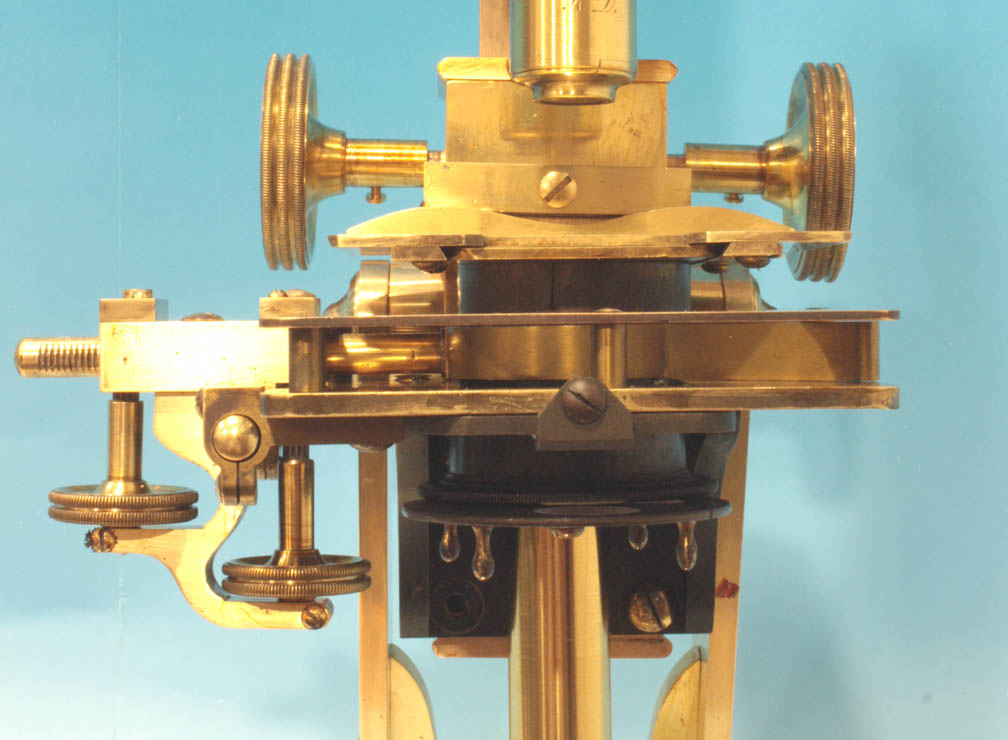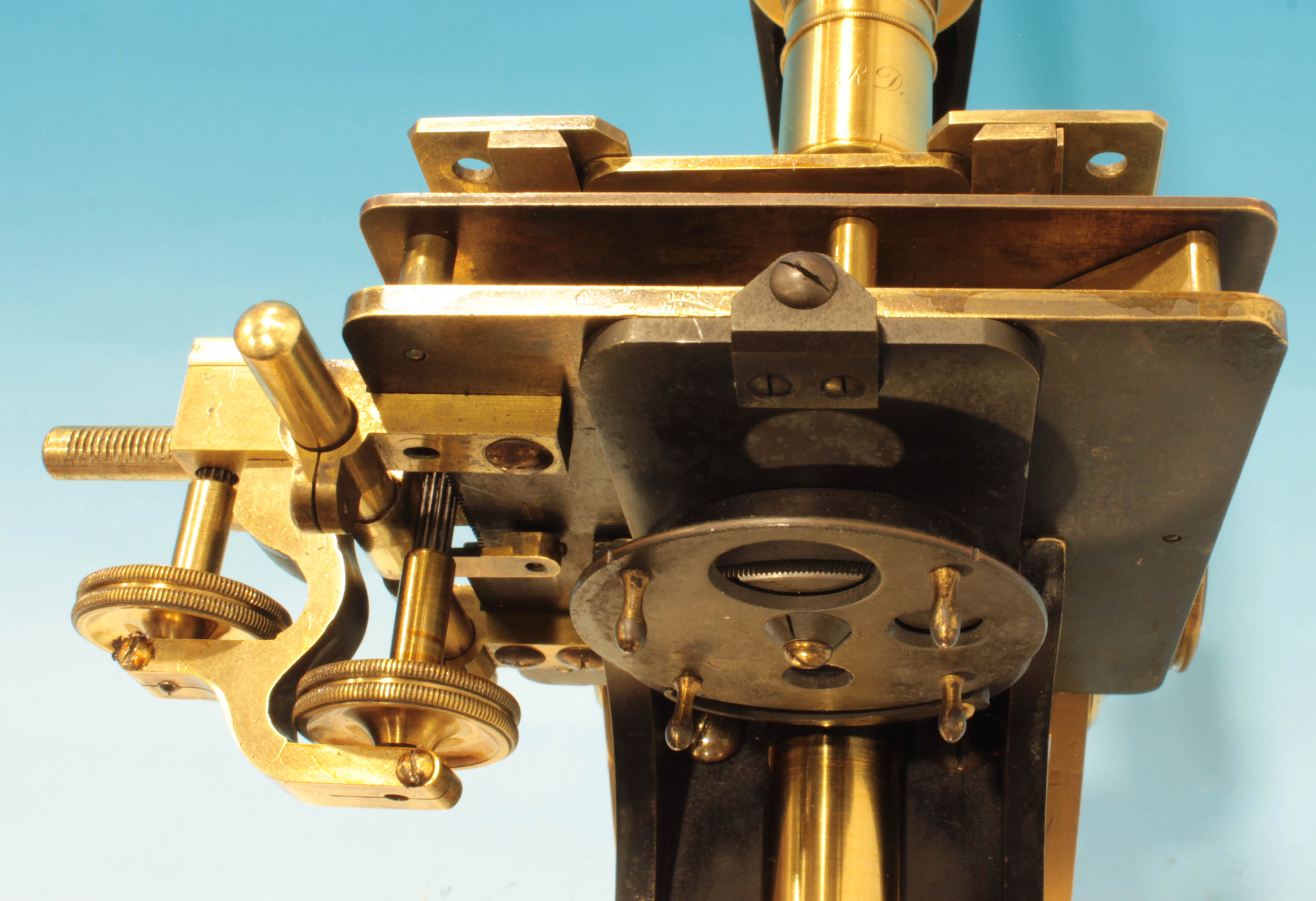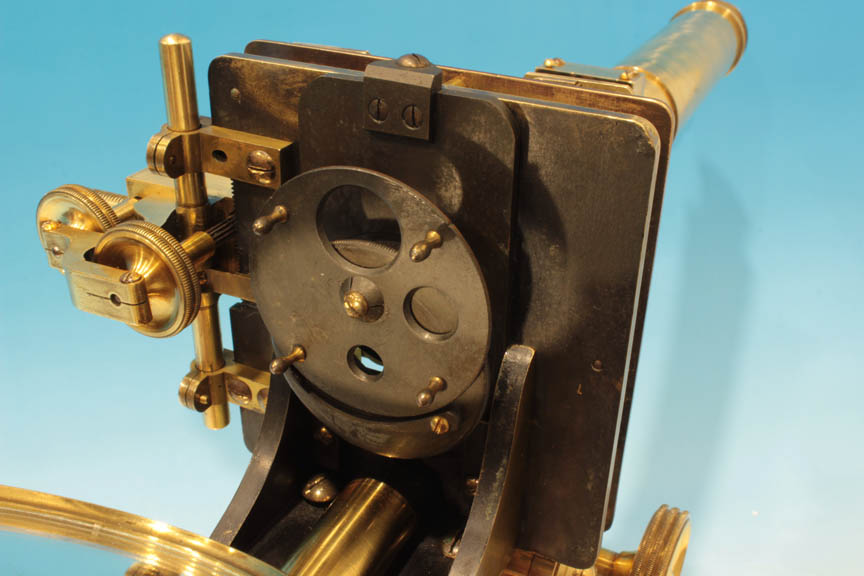COMPOUND MONOCULAR BAR LIMB MICROSCOPE
MAKER: ANDREW ROSS
MODEL: No. 1
SERIAL NUMBER: 161
c.1844
MECHANICAL STAGE AND SUBSTAGE APERTURE WHEEL:

The mechanical stage has a top plate that supports the slide.
The top plate slides onto a rectanglar piece which has a ring on its bottom fitting into a slightly larger ring; the movement of this lower ring is controlled by the knobs under the stage:


The ring is part of a single piece of brass which has the racked rod to one side of the stage and two finger-like rectangular projections to the other side; these projections stabilize the ring, preventing it from rotating on the axis of the (round) rod. This moving piece is sandwiched between the two bottom plates. (See below for images from underneath the stage).

The ring-in-ring arrangement allows the top stage plate to be rotated by hand as desired.

The controls for the mechanical stage project below stage and are situated next to each other, as seen from the front of the microscope.

The knob further away from the stage acts on a rod which has a rack cut into it and controls movement in the X-axis and is attached to the ring. The pinion of the knob closer to the stage acts on a rack cut into the bottom plate of the stage to move the assembly holding the ring in the Y-axis.

The entire stage assembly is supported on an L-shaped bracket with curved triangular sides. The bottom of the stage is blackened to avoid stray reflections of light from the mirror. The tailpiece supporting the mirror also fits into the threaded bottom side of this bracket. This bracket is attached to the gear box by four screws.

Accessories are carried on a rectangular plate which slides into the bottom of the stage to fit into the space(red arrows) between two tabs and the bottom of the stage. A screw on these plates has a reduced diameter on its end which fits in a depression (yellow arrow) on the front of the stage. This screw can be adjusted to register the plate via that depression so that the accessories are centered in the X optical axis.
As shown above, a wheel of apertures fits into this location and has four knobs projecting down to rotate it into any of its four positions, each registered by a click-stop. There are three different size openings and one position that has no opening.







